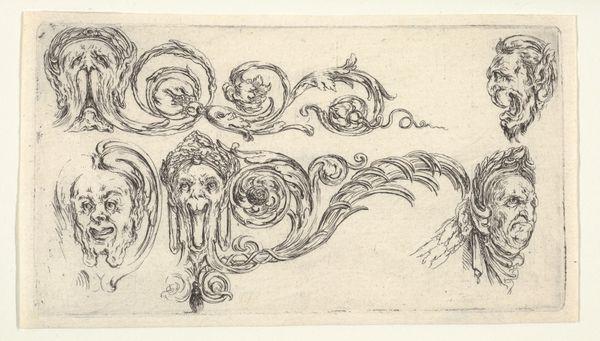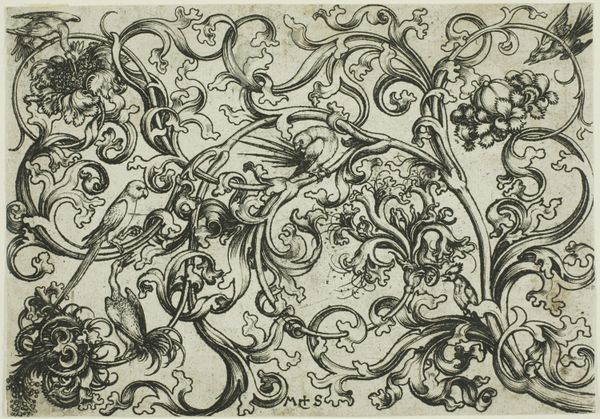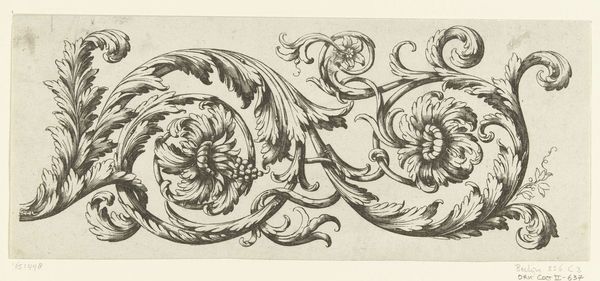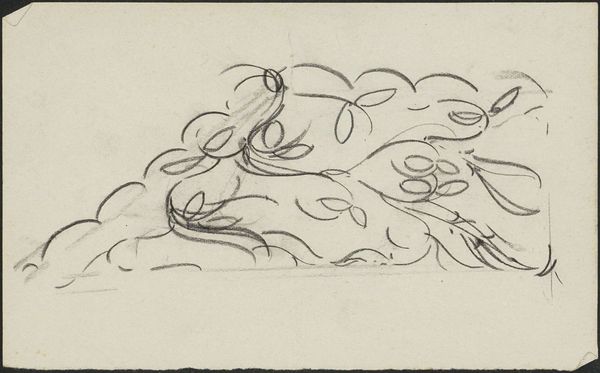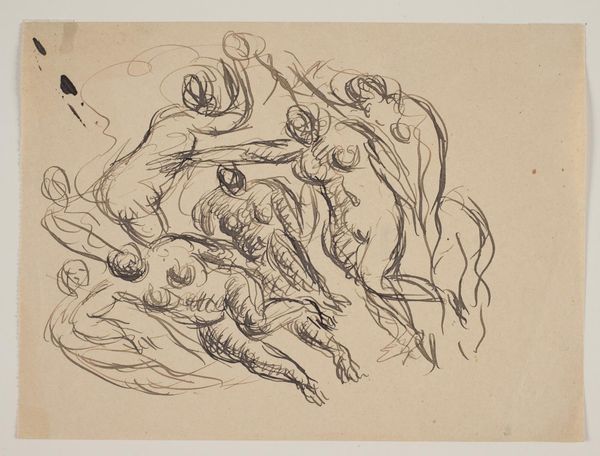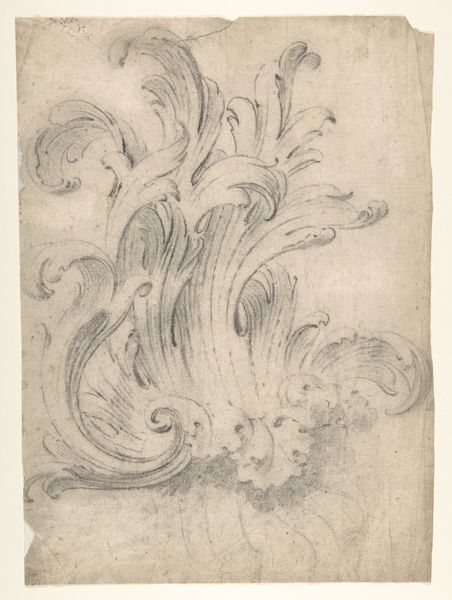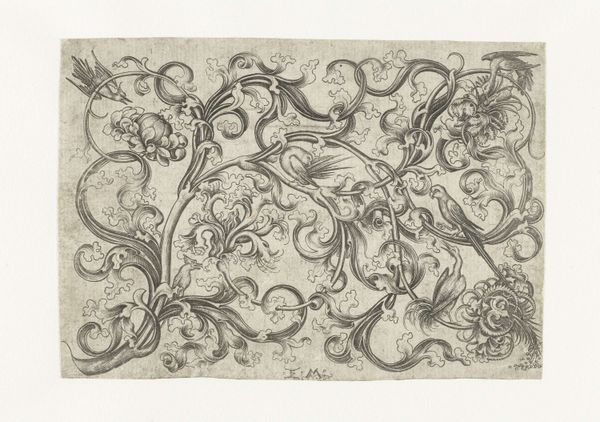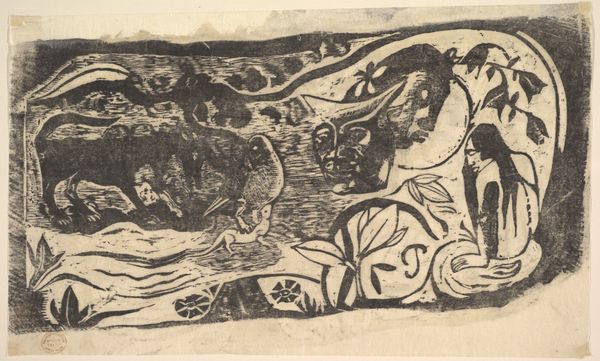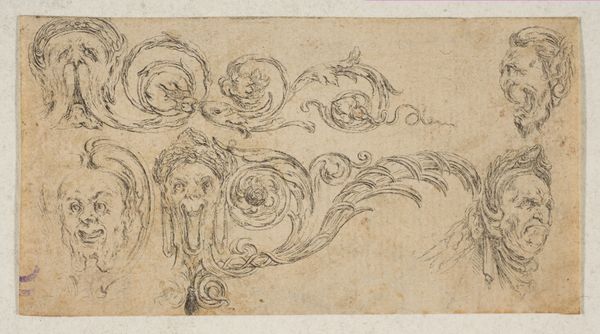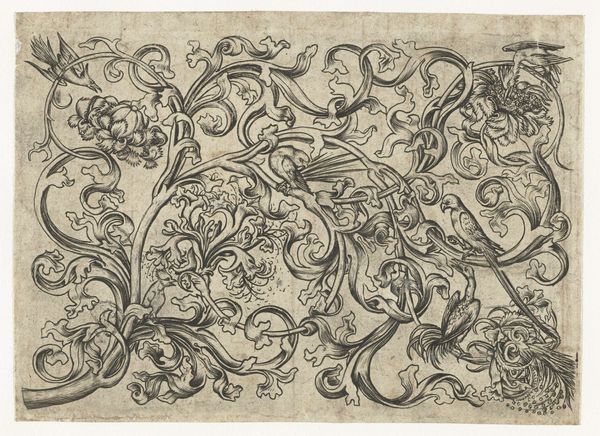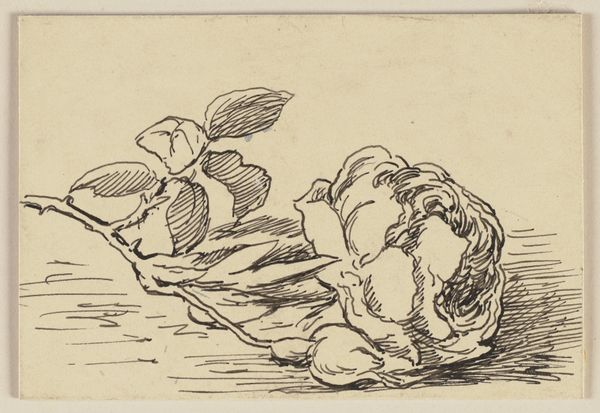
#
ink drawing
#
ink painting
#
pen drawing
#
pen sketch
#
henna art
#
ink drawing experimentation
#
pen-ink sketch
#
pen work
#
sketchbook drawing
#
sketchbook art
Dimensions: height 44 mm, width 141 mm
Copyright: Rijks Museum: Open Domain
Curator: This is "Vignet met schild, knots en lans," a pen and ink drawing by Giovanni Battista Piranesi, dating from approximately 1730 to 1778. It’s currently held here at the Rijksmuseum. What are your initial thoughts? Editor: It strikes me as very energetic. Despite being a monochromatic sketch, there's a palpable sense of movement, almost violent, in the way the objects are arranged. It looks as though it's ready to fight. Curator: Precisely. Piranesi, known for his etchings of Roman architecture, also delved into weaponry and classical ornamentation. The vignette, or small decorative design, presents symbols of power and defense: a shield, a club, and a lance, seemingly arranged after or even during a battle. These symbols connect to the complex political and martial climate of the 18th century, specifically ideas around defense and governance. Editor: Absolutely. The shield, particularly, carries centuries of loaded symbolism. Beyond its obvious defensive purpose, it represents protection, security, and even divine favor. Then we add the club and lance...It’s about far more than physical might. What strikes you as telling here? Curator: It’s the ambiguity, actually. Piranesi presents symbols associated with both noble defense and potential aggression, blurring the lines between protection and domination, alluding perhaps to the moral ambiguities inherent in power structures. Are these tools of governance, or oppression? Editor: It is all in the arrangement too. Note how Piranesi doesn’t cleanly separate symbols. Everything swirls into the next element to communicate visual unity, even in a sketch. Curator: Exactly. It’s this complexity, this questioning, that makes Piranesi so relevant even today. It urges us to question the accepted narrative of strength, force, and security. Editor: Looking at it now, one sees those swirling shapes and that energy, but it might stand for something far deeper in history than what’s obvious to modern audiences. The symbols connect past to present in a fascinating way. Curator: A vital message, indeed. Piranesi invites a critical evaluation of power, presented through a simple, dynamic sketch.
Comments
No comments
Be the first to comment and join the conversation on the ultimate creative platform.
